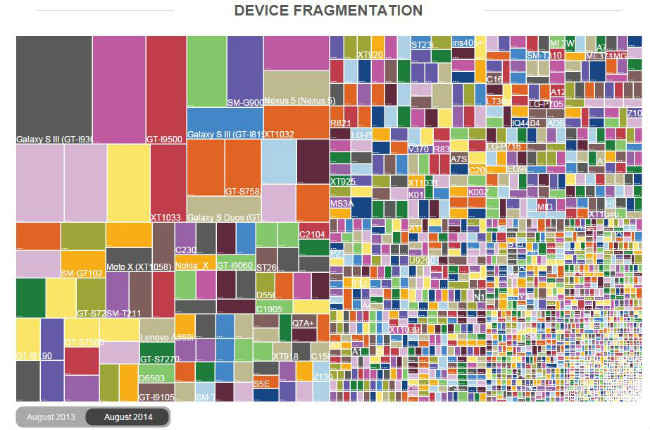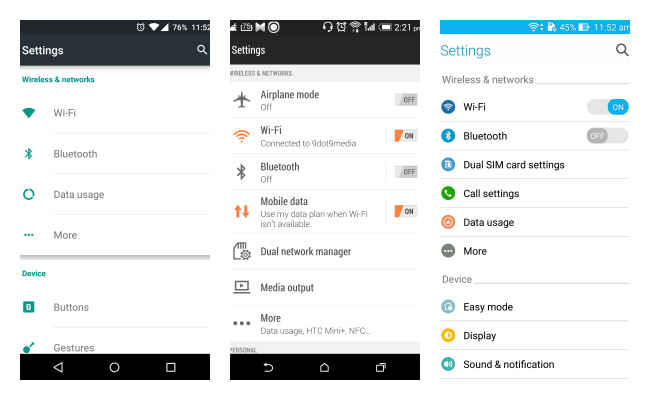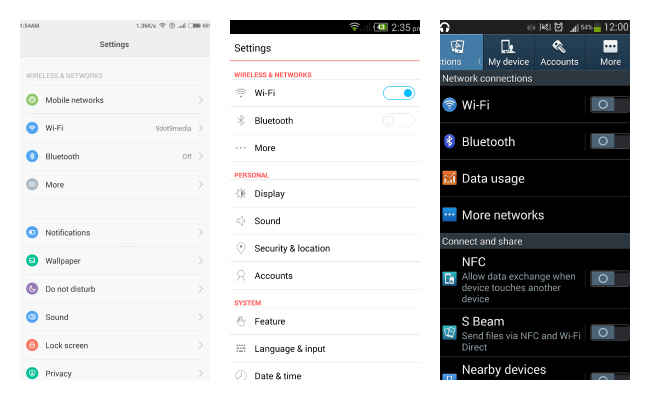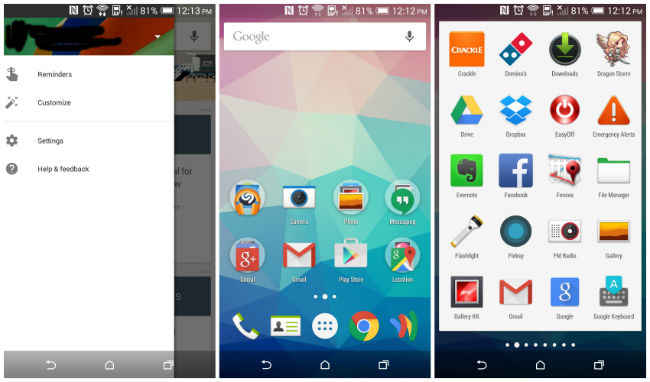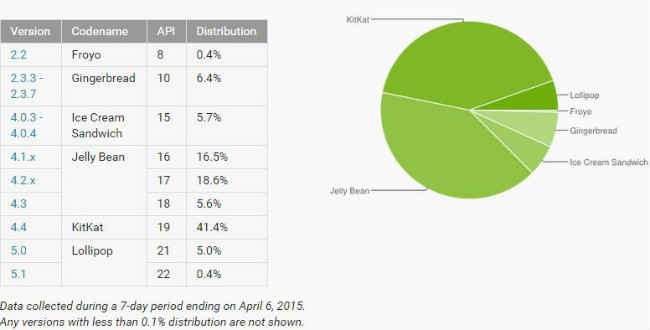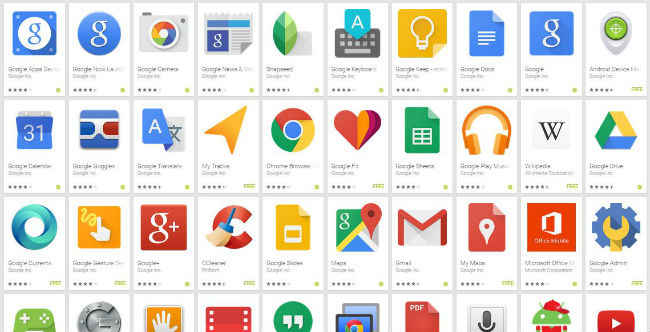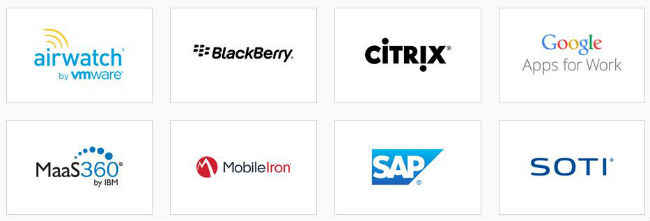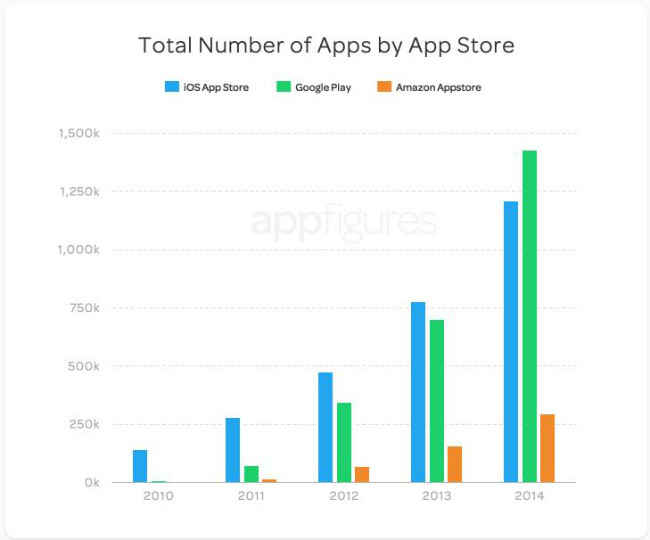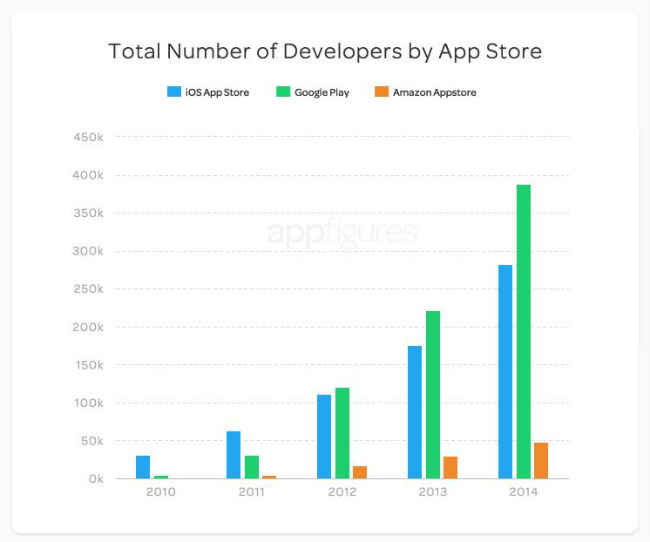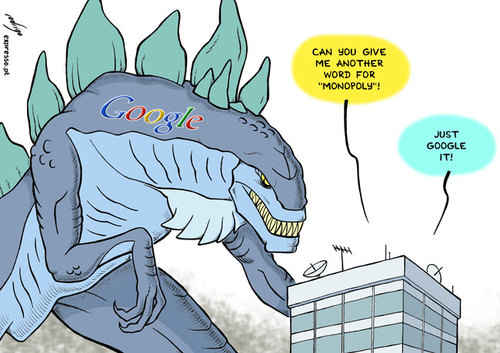The Android Dilemma: 10 problems that need fixing
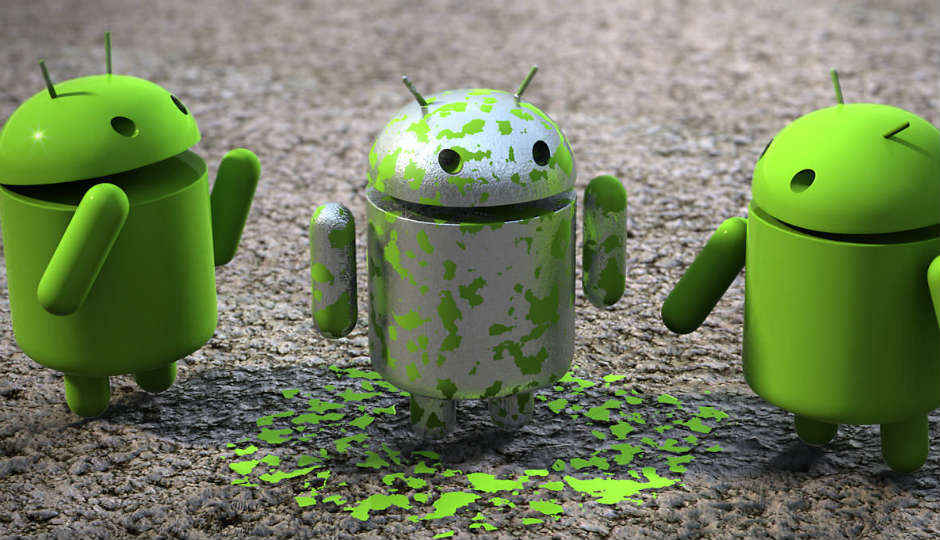
Android is the largest computing platform in the world and because of that, it also has a bunch of problems that need to be understood.
Let’s begin this story with some stats:
Android’s global market share in 2014: 76.6%
No. of Android smartphones shipped in 2014: over 1 billion
No. of active Android users in a month: over 1 billion
No. of apps available on the Play Store: 1.4 million
The above numbers represent something massive, something reminiscent of Microsoft during its heydey. They also prove beyond doubt that Android is the single most popular and accepted computing platform on earth today and, in order to take up that mantle, there’s a tremendous number of things it did right.
On the flipside, Android is a gargantuan beast, and the nature of the beast entails certain inherent flaws. Now before I get down to enumerating these flaws, I need to make certain points clear. Many of these flaws exist because of nobody’s fault, not Google’s or Android as an OS; they exist because of Android’s size and reach and are therefore, unavoidable. The point of this story is to highlight these flaws, which I believe, can be improved upon.
To sum it up, the flaws do not lie within Android itself, but rather arise because of where Android is at its current moment.
Still on the same page? Okay, then let’s go.
The Fragmentation Problem
This is one of the biggest headaches that Google has to deal with, and something that it shares with Microsoft in the desktop space. What this means is that there are so many different kinds of Android devices out there with varied screen sizes and types, hardware, software versions, interfaces and features that it becomes difficult for Google or Android developers to efficiently release software for them. Open Signal states that in eight months of 2014 alone, there were 18,796 different Android devices in existence globally, only 21% of which ran the latest Android version at that time.
An Open Signal chart showing the scope of Android fragmentation
Of course, the same fragmentation that can be a bane for developers, is a boon for consumers because it means they get access to a variety of devices that try and fit into every possible niche and price-point. Also, it’s this malleability of Android that has made it the most popular mobile OS ever.
But let’s get back to the problem; the fragmentation that I’m talking about is an issue that gives birth to other problems facing Android, problems that Google should tackle (and have begun to tackle).
The Android fragmentation problem: Forked (or not) versions
The most immediate way that Android manufacturers try to differentiate their devices from others is with customized user interfaces. These interfaces don’t just change the way the phone’s UI looks but also the way you use the phone. Prime examples of these are Samsung’s TouchWiz, HTC’s Sense and CyanogenMod. Now whether these are true ‘forks’ of Android is a debate for another day. What matters right now is that these interfaces present a bunch of different faces of Android to the end-user. If a layperson who previously owned the original Motorola Moto G and then bought the Huawei Honor 6, you can’t blame them if they’re confused by how to use the phone, even though at the end of the day, they still bought another Android phone.
The different ways in which the Android settings menu is displayed on different phones.
This confusion can further intensify because of the numerous homebrewn core apps that Android manufacturers bundle with their devices. If, for instance, someone owned an HTC phone and liked BlinkFeed, they’d be disappointed if they didn’t find it in an Android phone from another manufacturer. Google also has no control over the way, or the time in which, these homebrewn apps are updated to stay perfectly compatible with newer versions of Android. Other times these apps function as pure bloatware (for instance ChatOn that used to come pre-installed on Samsung phones, the uninstallable Lenovo NQ security app and the Omelette Chat app on Asus Zenfones).
The Solution: Google is already trying to mitigate the effects of software and UI fragmentation in a couple of ways. One, with the help of the Google Now launcher, Google has now given every Android user the ability to make their phone look and work almost the same way as a phone with the stock version of Android. Two, Google also appears committed to its line-up of Nexus devices so that there’s a device in the market that runs Android the way Google wants.
The Google Now launcher
Unfortunately, as well-reviewed as the Nexus devices are, they are nowhere close to the kind of sales that phones from companies like Samsung, HTC and LG rack up. Therefore, to properly address the issue, Google has to work with manufacturers to weed out the above mentioned issues.
The Android fragmentation problem: Update delays
A direct repercussion of the above mentioned propagation of custom UIs is that more often than not, a majority of Android users are never on the latest Android update. This is because even though Google makes the updates available to everyone, the manufacturers have to make the update conform to their respective custom UIs or forks. Depending on the company, and the handset, this delay may last a couple of weeks, a couple of months or the update may never come at all. As a result, not only do Android users not get the benefits that an update may bring but Google has an additional problem to ensure all security, performance and bug issues are taken care of on older versions as well.
By not getting the latest updates, the best case scenario is that consumers miss out on some visual and interface changes, but the worst case scenario is that they miss out on critical security and performance updates not just for the operating system but for apps as well.
To get an idea of how serious this issue is take a look at the pie chart below from the Android developers dashboard which shows that by the first week of April, only 5.4% of Android phones were on Lolipop, an update that was released in the first half of November last year. The chart also shows that nearly 20% of Android phones are still on a version of Jelly Bean that was released in October of 2012.
In comparison, about 73.2% of iOS users are currently using iOS 8 or later, less than seven months after the update was made available. Of course, it’s worth noting here that iOS had just under 15% of the market share in 2014, as opposed to Android’s 81.5%, so the problem is bound to be magnified in the latter’s case.
The Solution: As with the previous point, Google is tackling this issue in a few ways. Google has brought all of its core apps (Gmail, YouTube, Google+, Drive etc.), under the purview of the Play Store so that they’re kept updated irrespective of whether the OS on the phone has been. Plus, there’s the Google Now launcher, which lets users who still haven’t received the Lollipop update experience Material Design.
None of the above though is enough to deal with this issue. Google needs to take the risk of pissing off its partners and take a harder stand when it comes to updates so that, ultimately, the user benefits. By taking a more hands-on approach with at least its bigger partners, Google can ensure that they don’t leave most Android users out in the wild.
The Android fragmentation problem: Security
Security has always been a kind of bogeyman for Android, its threat is shot way out of proportion, but it still remains a concern. As we saw with Windows, Android’s presence is so large that it is bound to be a big target for all manners of virus, malware and security vulnerabilities. One of the most evident security problems stems from the staggered update cycle that I talked about above and it has but one solution: Android phone manufacturers need to step up their game and deliver updates as quickly as possible.
Another issue is the presence of third party app stores and the ability to install apps directly using apk files. Yes, complaining about this issue is like complaining about getting fat if your diet only consists of cheese burst pizzas and it’s possible to keep your Android device perfectly secure by only installing apps from trustworthy sources and clicking on weird links on the Internet. However, malicious apps were discovered on the Play Store itself as recently as two months ago. Things turn even greyer with ad-networks on websites triggering apk download pop-ups that are annoying to get rid of.
In some cases however, Google is directly to blame, as in the case of a WebView bug uncovered earlier this year which affects all Android devices that run OS versions before 4.4, that Google is not taking an active role in patching out. Instead Google has laid the responsibility on the doorsteps of Android manufacturers.
The Solution: Google’s decision to bring its core apps into the Play Store ecosystem has made them easier to update and patch irrespective of the operating system version. It does need to improve oversight on the Play Store to not allow any malicious apps in though.
With more and more malware being directed at Android, it wouldn’t be crazy for Google to push out its own security suite even if just to alleviate its users’ worries, just like Microsoft did with its Security Essentials suite on Windows Vista and 7. Or Google could, as I suggested earlier, push its partners to update their devices more often.
The Android fragmentation problem: Enterprise acceptance
All of the above issues have ensured that enterprises have been slow to completely accept Android in the workplace. Even though Google has released the Android for Work app/platform to make it easier for you use your Android phone for work, there are still some issues at play. Android for Work still requires companies to set up an Enterprise Mobility Management system so that IT managers can control the devices. Because Apple and Blackberry have a considerable lead over Android in enterprise acceptance, companies that have already spent money in establishing an IT policy with iOS and BB in mind. This further extends to IT managers and employees who have been trained to manage iOS and BB and whether their employers believe its worth investing in training them to also manage Android.
The Solution: More than anything, the enterprise acceptance problem for Android is a perception problem and Google has done the right thing, if a bit late, by introducing Android for Work. With Android for Work, Android users can completely separate their official and personal work on their phone. It allows you to create a work profile governed by your company’s IT policy while keeping your personal profile away from your IT manager’s purview. This includes stuff like photos, videos, music and even apps, so it’s almost like you have two phones in one – one for work and one for the rest.
The most important thing is here for more IT departments opening up to accepting Android devices as part of their BYOD policy. Things are getting progressively easier for Android now that many popular EMMs from Blackberry (BES), VMWare (Airwatch), SAP, Citrix, IBM (MaaS360), MobileIron and SOTI support Android for Work.
Samsung has also done a great deal in getting its Android powered Galaxy devices accepted for enterprise use. With the Samsung Knox platform, IT managers can manage Galaxy devices and also be assured of enterprise level security on their employees’ phones. In fact, Samsung Knox is probably one of the biggest success stories when it comes to Android in the workplace.
The ‘iOS-first apps’ problem
Apple’s App Store once held the record for the largest smartphone app store with respect to the number of apps but has since been overshadowed by the Android Play Store which has about 300,000 more apps than the Apple store. The Play Store also beats the App Store in the number of developers with almost 4 lakh developers making Android apps as opposed to under 3 lakhs in Apple’s stable.
However, those numbers don’t mean that everything is great for Android, because it is still being ignored by a large number of quality app developers as a debut platform for their apps. According to Quartz, an analysis of start-ups showed that about 90% of them were developing apps for iOS, 45% were developing for both iOS and Android while only 10% were developing exclusively for Android. Popular apps like Snapchat, Vine, Mailbox and Pinterest debuted on iOS and were only launched on Android after a significant amount of time had passed. New and popular apps like Periscope and Meerkat are also only available on iOS, along with other apps like Facebook Paper, Medium, Clear and Tweetbot. This trend also extends to popular games like the Infinity Blade series, Hearthstone, Device 6, Tiny Wings, Plants vs. Zombies 2 and Cut the Rope 2 which are either iOS exclusive or debuted on iOS first.
One of the big reasons for the above trend is that developers tend to earn more money from their apps through iOS downloads. According to an AppAnnie report, developers made 60% revenue from their iOS apps than Android. Developers of the critically praised game Monument Valley also revealed that 95% of Android gamers had pirated the game.
Apart from piracy and revenue, one other reason some app developers prefer iOS over Android is app discovery. App curation on the Apple App store is better than on the Play Store with better quality of curated lists that span multiple topics and weed out low quality apps.
The Solution: With Android growing day by day and the Western smartphone market reaching saturation, it should only be a matter of time before developers give Android equal importance. However, this will only happen if Google takes upon itself to clean up the Play Store, refine the search tools and get more hands-on with respect to curation, making it easier for Android users to discover apps.
Piracy is a much more complex problem to solve but Google has the ability to exploit its own ad network to offer app developers other streams of income other than paid downloads. As Android continues to grow, app developers may find it monetarily advantageous to use advertisements to generate revenues and offer their apps as free downloads, which will make piracy moot.
The Storage problem
Most budget Android phones in the market today offer something like 8 or 16GB of storage along with support for microSD cards. Now, many users believe that because of the external storage support, their storage needs will be met but that’s not entirely the truth. Android itself takes up about 40% of the internal storage space and on phones that don’t run Lollipop, you can’t install apps on the external storage. This means that often you have very little space left to install big games or apps. On top of that, if you’ve saved your music or photos to the external storage and want to edit things like album art and ID3 tags or want to delete stuff, many apps will be unable to do so because Android doesn’t allow them to modify data installed on external storage. As a result, even though on paper your Android phone has plenty of storage, you won’t be able to use all of it freely.
The Solution: Google has identified the storage issue and in Lollipop allows third-party apps full control over the external storage. However, you still aren’t able to install apps on the microSD card directly. On the whole, as apps and games get larger, I’d assume that Android device makers will also offer phones with more internal storage. It’d also be great if Google was able to identify a process that would allow users to install apps directly on external storage without hampering performance.
The ‘Resource Hunger’ problem
There is a general feeling that Android phones, unless super-powered, tend to be resource hungry and often suffer from performance problems. This issue tends to be heavily anecdotal just as we saw when the 1st gen Motorola Moto G got the Android Lollipop update. While many Moto G users didn’t have any issues with the update, many complained that their Moto Gs had considerably slowed down and had even started crashing. Another anecdotal evidence is what we saw in our labs when we loaded the ‘Marvel Contest of Champions’ on a Xiaomi Mi 3 (2.3 GHz quad-core processor, 2GB RAM, 1080p screen) and on an iPad 3 (1GHz dual-core processor, 1GB RAM, 2048x1536p screen). The game’s performance was much smoother on the iPad than on the Mi3, even though the latter’s specs beat the former’s on paper.
This is representative of an overall trend among Android manufacturers who push hardware that looks great on paper into their devices without resulting in proportionate real world performance. This is one of the major reasons why many first time Android buyers end of disillusioned because they end up buying phones with ‘quad-core processors’ and ‘2GB of RAM’ but get inconsistent performance and shoddy experiences in return.
The above, like the other problems I’ve talked about is not as much Android’s fault but rather a problem because of its nature. Just like you have many underwhelming Windows PCs and laptops, you can ultimately lay the blame at the feet of the device manufacturers.
However, one area where Android is directly at fault is RAM efficiency and its requirement for large quantities of RAM. The reason why you’re already seeing Android phones with 3GB of RAM while Apple has stuck to 1GB on its iPhone 6 is because of the former’s garbage collection process. Android’s overall efficiency depends on how its unused memory, freed up after an app is closed, is recycled into the usable memory pool. Android tends to stack this unused memory for a time after which it recycles it wholesale and in order to do it, it needs a large quantity of free usable memory without which the recycling process slows down the entire system. Both the Dalvik Runtime (default in Android phones before Lollipop) and ART runtime (default in Lollipop era phones) use similar non-compacting garbage collection methods, so the above issue should continue for a while.
The Solution: There’s nothing much that Google can do with respect to the hardware that its partners choose to run Android. However, it has tied up with some manufacturers to give consumers and the market an idea of what the ideal and minimum Android device should be with programs such as Nexus and Android One.
With respect to the garbage collection process I mentioned earlier, there is a reason why Google chose to go with it. This process helps apps ‘save your status’ on your Android phone and that’s why you don’t need to reload webpages when you reopen your web browser after a little while. This should theoretically help conserve battery life. On the other hand, the AOSP (Android Open Source Project) is working on a compacting garbage collector for ART, which means that the memory issues may fade away.
In Android 5.1, Google has also allowed app devs to choose between performance and battery life by letting apps spread their functions to all cores in a multi-core processor which should increase performance greatly. Devs can also choose not to enable this feature and instead ask their apps to focus on conserving the battery.
With the emergence of 64-bit SoCs and faster RAM on Android devices, we can only assume that Android performance and stability will only improve in the future.
The Tablet problem
You can’t deny that the once burgeoning tablet segment is now almost empty of valid Android options. Apart from a few Galaxy Tab variants from Samsung and the Nexus tablets, most large screened Android devices fall into the phablet category. However, the continued popularity of the iPad, and Microsoft’s renewed focus on the tablet/laptop hybrid category, prove that people are looking for devices with 7-inch and larger displays.
The iPad today is being used by kids, in the education sector, in enterprises and it seems strange that Android manufacturers have let Apple run roughshod over the segment. Sure, tablet sales are falling but the segment continues to remain an important one and Microsoft’s efforts could give it a shot in the arm.
The Solution: If Google believes in the potential of the tablet segment, then it needs to take a more active role in promoting Android as a tablet OS perhaps by tieing up with trusted device manufacturers in similar way it did with Android One. It should also develop tablet exclusive apps that have clear content creation and productivity uses and encourage top of the line developers to do the same.
Unlike some of the other issues mentioned in this story, I believe this one can only be solved with direct intervention from Google.
The ‘Too Big to Fail’ Problem
On its way to emulate Microsoft in the ‘90s, Google may have gone a step too far. Just like Microsoft, Google too has fallen into the bad books of the EU, those self-appointed champions of justice and fairplay, and now faces anti-trust allegations. There is some validity in those allegations though, because even without Android, Google held a monopoly, for all intents and purposes, on the search engine market. Even though iOS’ massive popularity, and the fact that Windows Phone and Blackberry still exhibit signs of life, mean that Android is not a monopoly, it is, by far, the most widely used computing platform today.
The new allegations focus on pre-installed Google apps on Android but Google has said that its hardware partners are free to install any apps on their devices and aren’t forced to only pick Google’s apps. That argument may hold water but there’s no denying that it’s a similar allegation that Microsoft faced with reference to Internet Explorer on Windows.
If the EU manages to prove its allegations in court, then Google may have to stop itself from pre-installing any of its apps, not that it will change much considering how popular Google’s apps are and, in certain cases, exist without any viable alternatives.
The Solution: Analysts suggest that Google may ‘open-up’ its apps to competitors in order to beat the anti-trust charges. On the other hand, since Microsoft and Apple also pre-install their own apps on their devices, they may find themselves in the same boat, so at least Google will get to enjoy some schadenfreude in the future.


